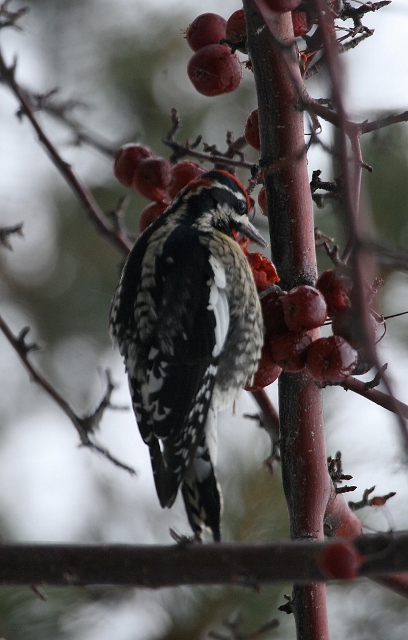saveourplanetearth.com
Call us: (775) 831-1331
Woodpeckers
“Rat-a-tat-tat-tat” and repeat — the familiar drumming of the woodpecker is prevalent in the forest all over Lake Tahoe. Woodpeckers are in the family Picidae, and several species make their home here.
Most species of woodpecker have similar characteristics: They all drum wood — a male announcing his territory or demonstrating his pecking prowess to attract females, or when foraging for food.
Most all woodpeckers, and certainly the species that live in the Sierra, are arboreal birds of wooded habitat. They nest primarily in cavities which they have excavated from trees or telephone poles, and occasionally, in the side of a residential or commercial structure.
It takes a pair about a month to complete the nest, with the male typically doing most of the work. Once completed, the cavity becomes attractive to other birds and they may be forced to defend it. The cavity is lined with the woodchips and sawdust from the excavation.
The male and female work together to incubate the eggs, the male predominantly incubating at night. The pair is attentive to each other during breeding season and is typically monogamous.
A nest usually consists of 2 to 5 round white eggs which are incubated 11 to 14 days. It takes another 3 to 4 weeks before the young are ready to fledge.
Woodpeckers dine mainly on insects and their grub, dug from living or decaying trees, along with the fruit, nuts or sap from live trees. It pecks at the wood of a tree, and removes its prey using a long, barbed tongue. In this way, the woodpecker aids trees in ridding them of harmful insects.
Woodpeckers have short, sturdy legs and four-toed feet. The first and fourth toes face backward, the second and third face forward, enabling them to firmly grasp the trunk of the tree. In addition to the strong claws for grasping, the woodpecker uses its tail as a prop against the tree for stability.
The woodpecker drums at a high rate of speed which, given the number of repetitions, would result in brain damage but for these protections: A small brain size, the orientation of the brain within the skull and the short time of impact.
The woodpecker’s eye has also evolved a protection in the form of a membrane that comes down over the eye a millisecond before impact. The nostrils are protected by being slit-like, with special feathers to cover them. Nature thinks of everything.
I’ve had the pleasure of observing a pair of white-headed woodpeckers, the only North American bird with a white head and black body, in the trails near the Ponderosa Ranch property where I walk every day. Males have a crescent-shaped red spot on the nape of the neck. They stuck around for about a week, which was a real treat, as I don’t see them very often. This woodpecker forages for pine nuts.
A woodpecker I see just about every day is the northern flicker. The flicker is a large, colorful bird with a distinctive call that I associate with spring, and I have been hearing it a lot lately. Listen for a sustained ki ki ki ki sound, with about 20 “kis”, followed by a few seconds of drumming.
The call note is a sound like kyeer, short in duration. When a pair is foraging close together, they communicate with a softer wick-a wick-a call. The flicker forages mainly on the ground eating insects, particularly ants and beetles but also eats berries and nuts.
I have only one time seen a red-naped sapsucker and that was at Sand Harbor in January, when I participated in the Bald Eagle Count, sponsored by the Tahoe Institute for Natural Science. One of the sharp-eyed members in my group spotted it, busily working on a tree, most likely licking the sap with its bristled tongue. The sapsucker also eats fruit and insects.
The red-naped sapsucker is a medium-sized woodpecker with a white stripe along the side, black and white barring on its back, with a red throat, red forehead and, as the name implies, a red nape.
Also common to this area are the hairy and downy woodpeckers. These two species look similar, with a red spot on the head, black and white spotted bodies, with white or light grey underbellies. Even the calls are similar. The hairy is the larger of the two species; the downy being the smallest of all North American woodpeckers.
Listen to the similar calls of the hairy and downy woodpeckers and other birds at allaboutbirds.org.
Red-naped sapsucker
Photo courtesy of Will Richardson,
Tahoe Institute for Natural Science



